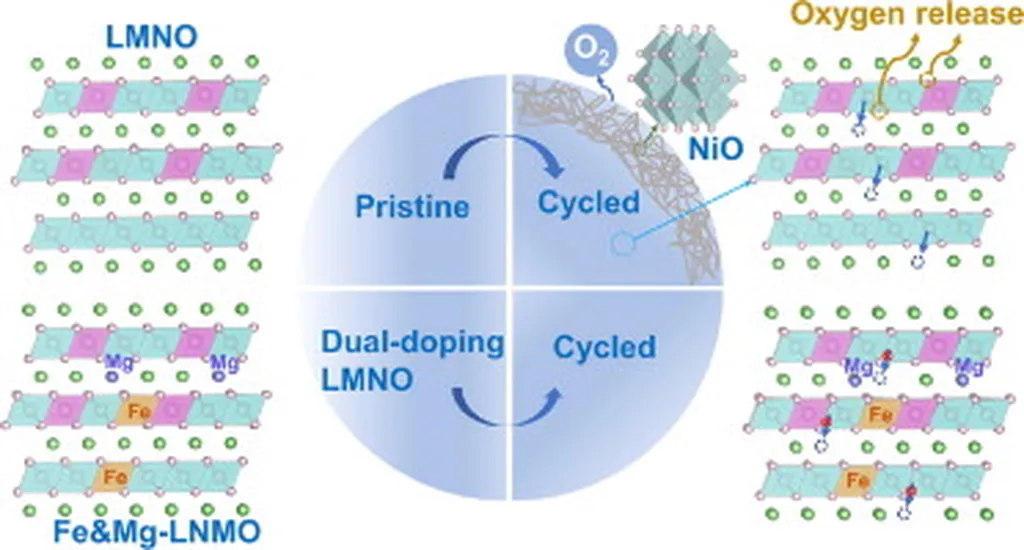In a significant stride towards enhancing the performance of lithium-ion batteries, researchers from the Department of Metallurgical and Materials Engineering at Universitas Indonesia have unveiled a novel approach to modifying cathode materials. The study, led by Nofrijon Sofyan, focuses on the synergistic effects of fluorine and molybdenum co-doping on NMC811 cathodes, a promising material for next-generation energy storage systems.
The research, published in the journal ‘Discover Materials’ (which translates to ‘Materi Ilmu’ in English), employs a hybrid synthesis method combining self-combustion and solid-state reactions to create carbon, fluorine, and molybdenum-modified NMC811 (LiNi0.8Mn0.1Co0.1O₂) cathodes. This innovative technique results in nanoparticles approximately 100 nanometers in size, exhibiting a hexagonal crystal system belonging to the space group R $$\:\stackrel{-}{3}$$ m.
The electrochemical performance of these modified cathodes is a game-changer for the energy sector. “The most effective modification is achieved through the co-doping of molybdenum and fluorine,” explains Sofyan. This dual-doping approach significantly enhances electrical conductivity, reaching a maximum of 4.67 × 10⁻⁵ S/cm, compared to the as-synthesized NMC811. Moreover, the lithium-ion diffusion coefficient sees a substantial improvement, increasing from 3.19 × 10⁻¹⁴ cm²/s to 1.86 × 10⁻¹³ cm²/s for the dual-doped NMC811.
The implications for the energy sector are profound. As the demand for high-performance, long-lasting batteries continues to grow, driven by the rise of electric vehicles and renewable energy storage systems, advancements in cathode material technology are crucial. The enhanced conductivity and lithium-ion diffusion coefficients achieved through this research could lead to more efficient and powerful batteries, ultimately benefiting consumers and industries alike.
“This research opens up new possibilities for the development of advanced cathode materials,” says Sofyan. “The synergistic effects of fluorine and molybdenum co-doping could pave the way for next-generation lithium-ion batteries with superior performance and longevity.”
The study’s findings not only highlight the potential of hybrid synthesis methods but also underscore the importance of exploring novel doping strategies to optimize battery performance. As the energy sector continues to evolve, such innovations will be instrumental in meeting the growing demand for sustainable and efficient energy storage solutions.
The research, published in ‘Discover Materials’, offers a glimpse into the future of battery technology, where the strategic combination of materials and synthesis techniques can unlock unprecedented performance levels. As the world transitions towards a greener and more electrified future, these advancements will play a pivotal role in shaping the energy landscape.

